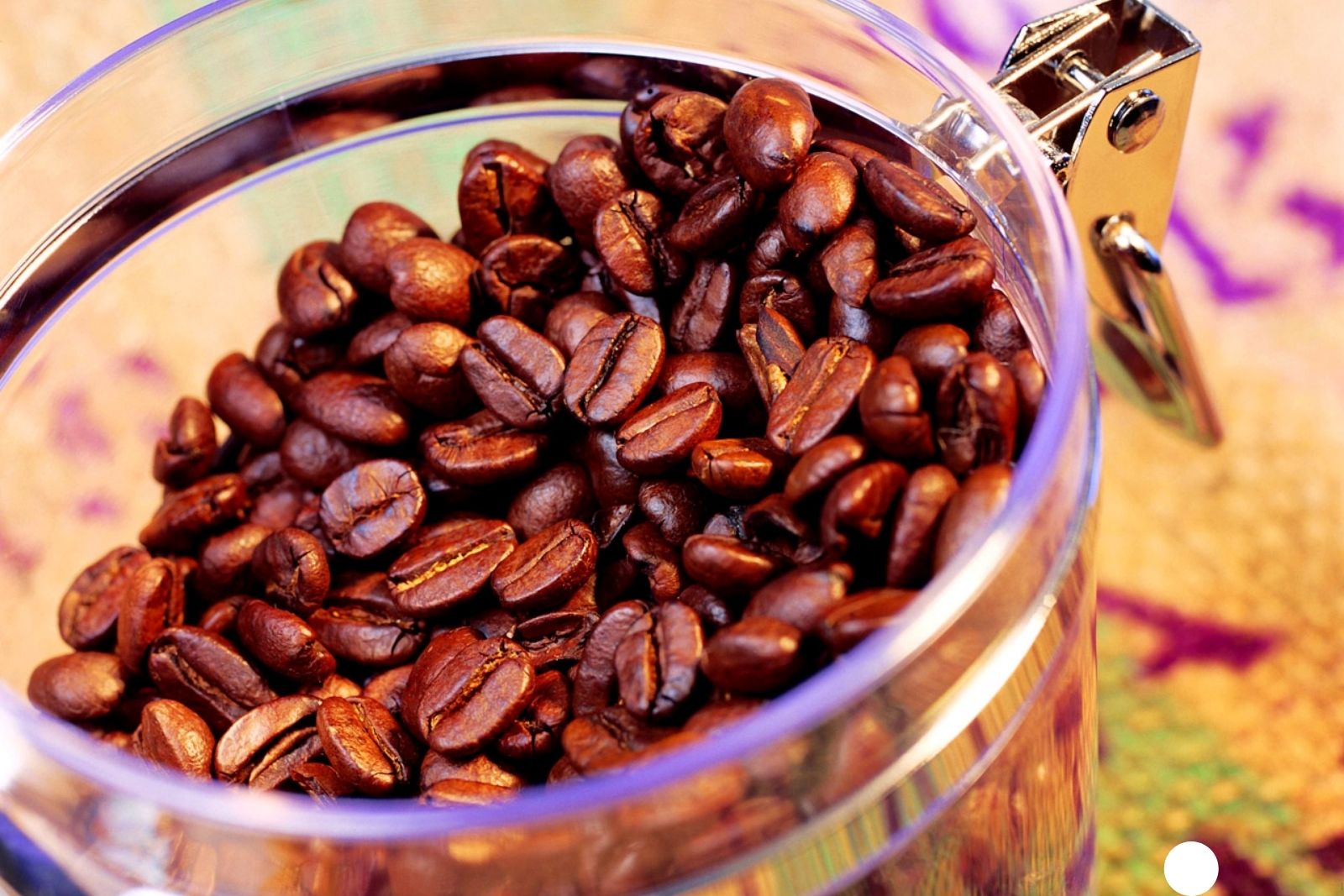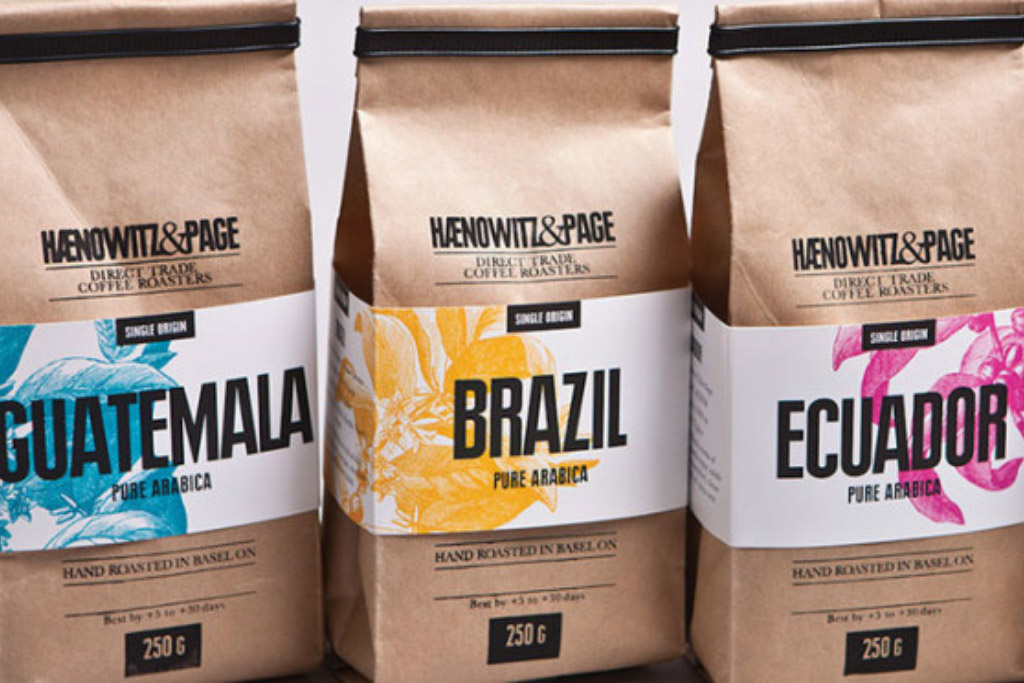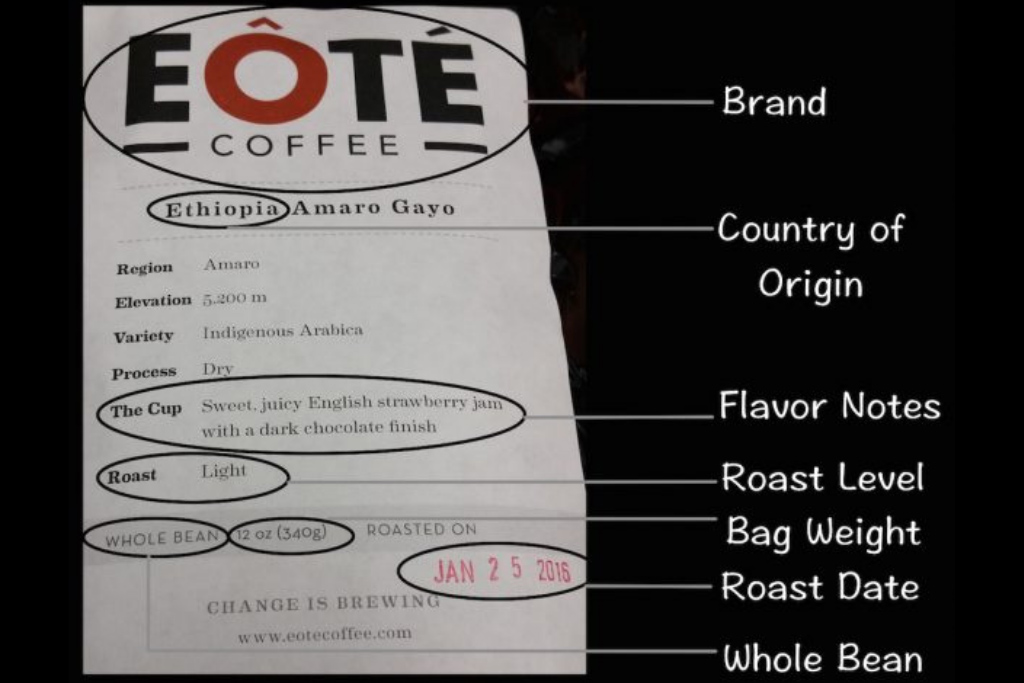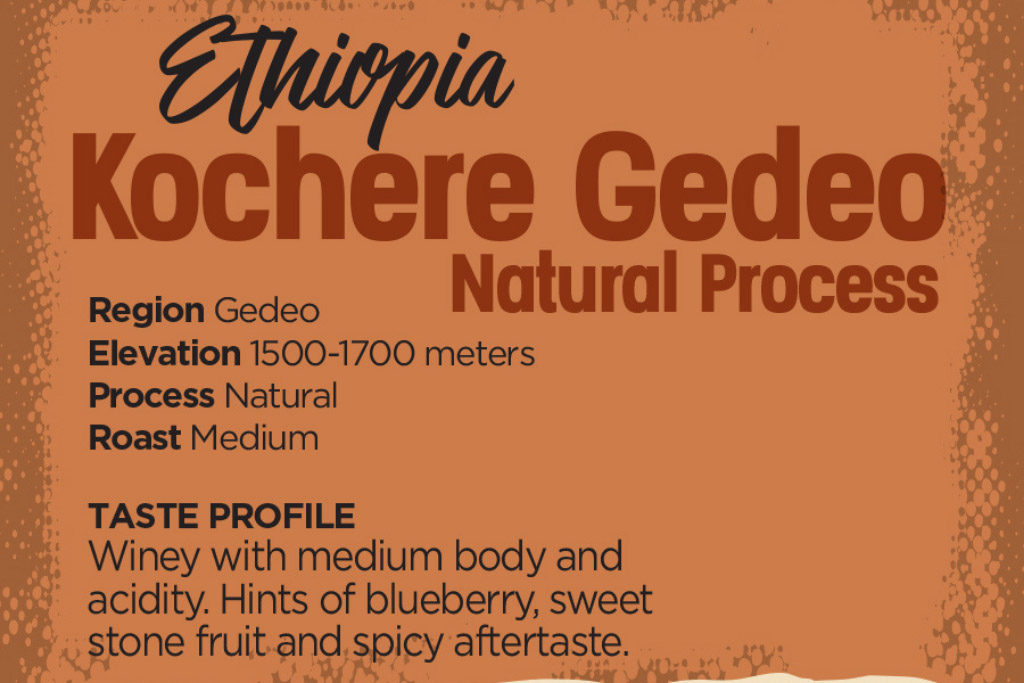
Important Information When Buying Coffee – When you buy a cup of coffee, what information will you notice? Information about coffee varieties, preparation, roasting mode, and brewing style. Let’s learn about Important Information When Buying Coffee.
When you buy a cup of coffee, what information will you notice? Brushes often look for information about coffee varieties, preparations, roasting, brewing styles, and roasting dates because these factors significantly impact the taste of coffee when drinking. However, the information on the packaging is much more diverse, and understanding this information will help you choose your favorite coffee package in a variety of choices. Today we will learn this basic information on necessary information when buying coffee.
1. Coffee Name – Information about coffee
A way to distinguish different product lines of the same brand. The product name will usually relate to the nature of the product, such as “Metal” from the Hyper brand, which refers to the robust coffee taste (100% strong roasted Robusta) using Phin, or “Ethiopian Sidamo Aleta Wondo” from Rocanini, indicating the breed name and coffee area used for drip.
2. Country / Region / Cooperative – Farm – Producer (Country / Planting Area / Company)
Information is often seen on the packaging of specialty brands. Each country, growing region, or manufacturing company will evoke different flavor characteristics of the product.

Countries
Countries are Guatemala, Ethiopia, and Vietnam v.v. Each country will evoke different flavors. For example, when referring Ethiopia, it will produce citrus and floral flavors. Or Guatemala and Vietnam will be nutty, chocolate. v.v. However, this information is very general, so the packaging often uses more detailed information such as “Planting area”.
For example, Ethiopia will have three popular coffee growing areas Yirgacheffe, Sidamo, and Harrar, and Vietnam has Luoyang and Cau Dat. More details will be on the production cooperative like Kenya Asali.
As will be the company name but planted in this region, just like Vietnam also has K’ho village in Luoyang. Of course, the same coffee variety but different planting areas or companies will produce different flavors. This information is therefore of great interest to the packaging.
3. Species/Varietals – information coffee
These two concepts are often controversial when each place uses the other. But understandably, the type consists of two main types of coffee, Arabica, and Robusta. Robusta will usually be bitter and less sour, and the taste and taste are also more straightforward than Arabica. The breed will be more detailed, including Arabica such as Typica, Bourbon, Catuai, and Pacamara v.v.
Referring to the species, coffee connoisseurs will immediately think of the concept of “Single Origin” this is also a confusing concept when many people feel that “Single Origin” refers to a single Arabica variety such as Typica or Bourbon in a coffee package.
At the same time, “Blend / Mixed” will include many different types such as Typica, Bourbon, and Catimor in the same bag. This concept is not wrong, but in the world, Single Origin is a comprehensive concept that can represent a seed, a growing area, a farm, a cooperative, or even a country.
For example, coffee from K’ho village can be called Single Origin because the beans have the unique characteristics of the land and people here that other places do not have
4. Altitude/Elevation
Altitude information also helps to evoke the same flavors as for Arabica – the higher the planting (1500m above sea level (masl) there is high acidity, the taste will be diverse, while at low altitude (1300m masl), the seeds will have a more specific taste such as nutty. Of course, this information is usually relative.

5. Process
There are many types of preparation such as Honey, pulp natural, semi-washed, wet hulling, etc. The same kind of coffee, but these types of practices will produce different flavors.
Ethiopia Sidamo, for example, will have both washed/wet and natural methods. In general, the dry process will bring a thicker and less sour body, while damp processing will help get a diverse lousy taste and, when drunk, will be more “clean.”
6. Profile/ Roast level
If the information is a light roast, implicitly understand that coffee, when brewed, will have high acidity and less bitterness. In contrast, Dark Roast (Dark Roast) implies that the taste of coffee when drinking will be very bitter and not sour. In addition, this information also helps us choose the corresponding brewing tool.
Such as light roasting is suitable for drip, while bold should be used for Espresso or filter (phin). That is reference information because the concept of roasting of each roaster and drinker will be different (the boldness of one person but the paleness of the other).
7. Taste note/Flavor – information coffee
Describes the characteristic taste of the coffee we’re going to drink. This information usually applies to specialty coffee beans because of their complex taste. For example, drift Away’s Kenyan seeds will have notes: grapefruit, jasmine, juicy, and peach.
That is also the characteristic that makes coffee interesting when each nut will have very different personalities and have its loyal customers. The information is only for reference because each person will have different tastes when enjoying it.

8. Story
Information about the geographical location such as garden, soil, climate, nuts, special preparation, and sometimes the story will make an exciting difference to the type of nut you are drinking.
9. Brewing/Use for/Roast for
Indicate which coffee will be best suited for, for example, Filter (Pour Over / Immersion) or Espresso, etc. The phase styles also correspond to different dark roasting degrees.
10. Roasted on / Roasted day – information coffee
Roasting or packing day. This information is essential because the coffee will taste better when it is new, but it is not good because a lot of gas (Co2) will affect the taste when drinking. If used for Espresso, it is recommended to brew 7-10 days after roasting to develop the coffee flavor fully. For drip, it can be used earlier.